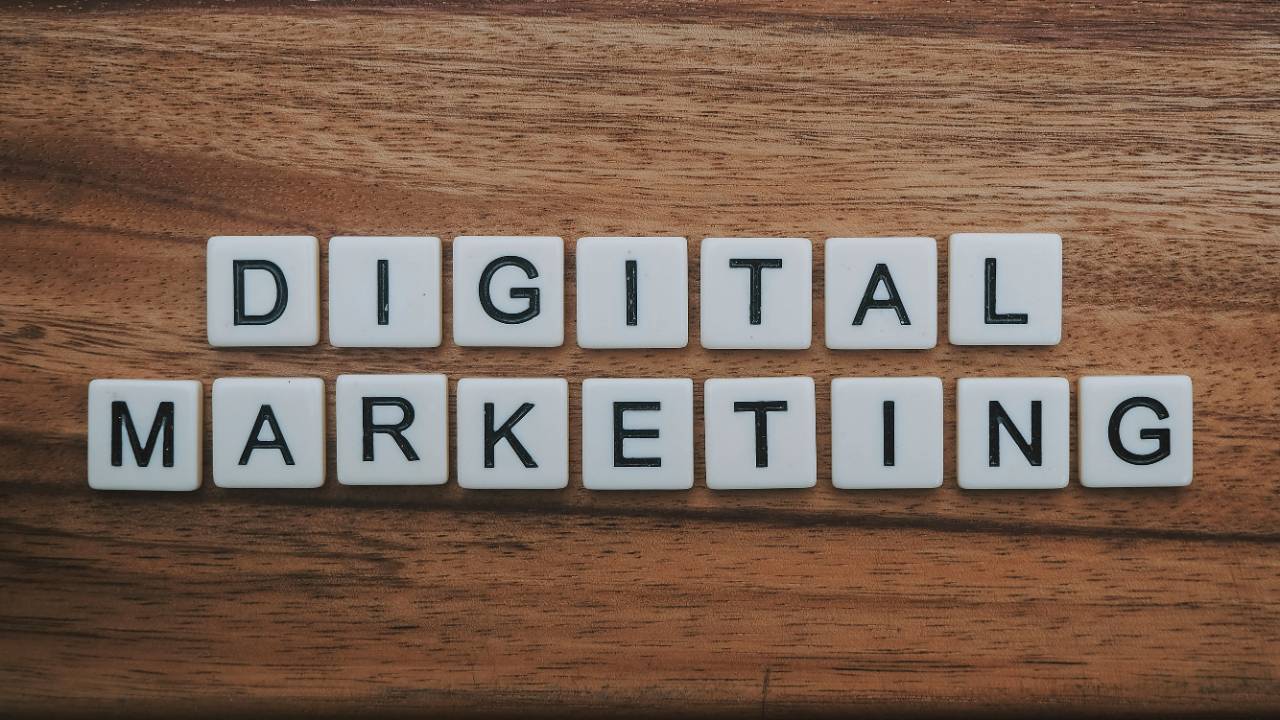
In the bustling world of digital marketing, keeping ahead means embracing innovation. Your strategy needs to evolve continuously to tap into new technologies and social trends. By crafting campaigns that leverage the latest digital tools, brands can create engaging experiences that resonate with consumers. Innovative campaigns often integrate immersive technologies like augmented reality or employ data analytics to personalise content, ensuring every interaction feels tailor-made for the user.
As you venture into the realm of innovative digital marketing, consider the power of storytelling. Crafting a narrative that captivates your audience will set your brand apart. The most successful campaigns tell a story that aligns with your brand’s ethos and values, driving home your message in a way that’s not just heard, but felt. This approach can transform passive viewers into active participants who are more likely to share your content and become advocates for your brand.
Remember, the key to a groundbreaking digital marketing campaign is to keep your finger on the pulse of digital advances while maintaining a clear focus on your desired outcomes. Whether you’re aiming to boost brand awareness, increase engagement, or drive sales, an innovative strategy that harmonises with your brand’s identity is crucial. Stay nimble, adapt to new opportunities, and watch as your digital marketing efforts propel your brand to new heights.
The Evolution of Digital Marketing
Digital marketing has seen transformative changes with the integration of advanced technologies like AI and AR, and the sweeping effects of the global pandemic.
Influence of AI and AR on Marketing
Artificial Intelligence (AI) and Augmented Reality (AR) have created new frontiers in digital marketing that you might find astonishing. Utilising AI enables businesses to personalise customer experiences at scale. For instance, AI-powered chatbots provide instant customer service, making your interaction with brands seamless and efficient. Meanwhile, AR has revolutionised the shopping experience by allowing you to try products virtually, from the comfort of your home.
- AI is used to:
- Analyse customer data
- Predict shopping trends
- Optimise pricing strategies
- Improve targeted advertisements
- AR capabilities include:
- Virtual try-ons
- In-store navigation
- Interactive advertising
Impact of the Global Pandemic
The global pandemic triggered unprecedented shifts in the digital landscape. With lockdowns in place, you’ve likely noticed an acceleration in online shopping and digital services. Marketers adapted by crafting creative digital marketing campaigns focused on empathy and community support. Blogs became central hubs for providing updated information as brands sought to nurture a sense of connection with you despite physical distancing.
- During the pandemic:
- Online content consumption rose significantly
- Brands prioritised digital touchpoints
- There was a surge in social media usage for real-time engagement
The pandemic highlighted the importance of adaptability in marketing strategies and the need for a robust digital presence to meet your expectations.
Developing a Strategic Marketing Plan

Crafting a strategic marketing plan involves a clear understanding of your target audience, setting realistic goals, and smart budgeting. This ensures that you make the most of your resources to effectively reach and engage with your audience, fostering better brand awareness and growth.
Importance of Understanding Your Target Audience
Understanding your target audience is crucial. It’s about recognising their interests, needs, and behaviours to tailor your marketing strategy accordingly. Use demographic data, psychographics, and behavioural insights to create customer personas. For instance:
| Age Group | Interests | Preferred Channels |
| 18-24 | Gaming, Social Media | Instagram, Twitch |
| 25-34 | Career Development, Travel | LinkedIn, YouTube |
By aligning your content and advertisements to these specific personas, you can increase engagement and conversion rates.
Setting Achievable Goals and Objectives
Your goals should be SMART: Specific, Measurable, Achievable, Relevant, and Time-bound. Defining these goals will shape your tactics. For example, boosting brand awareness might involve tactics like influencer collaborations or SEO-driven content, while increasing B2B leads may rely on LinkedIn ads and webinars. Keep these objectives aligned with your overall marketing strategy and the end result should be focused on generating measurable outcomes, such as a percentage increase in leads or website traffic.
Budgeting for Digital Campaigns
Efficient budget allocation is vital in digital marketing. Allocate your budget based on the tactics most likely to reach your targets, whether B2B or B2C. Delineate your total budget into categories using a table:
| Category | Percentage of Budget |
| Social Media Advertising | 40% |
| Content Creation | 30% |
| Email Marketing | 20% |
| SEO & Analytics | 10% |
Plan for contingencies and track ROI to inform future budgeting decisions. Adjust your allocation as campaigns progress and learnings are gathered to optimise for the best engagement and financial outcome.
Executing Digital Marketing Campaigns

When you execute digital marketing campaigns, focus on engagement and providing value to your audience. Choose the right platforms and strategies to enhance performance and leverage various elements like storytelling and user-generated content to create a lasting impact.
Effective Use of Social Media Platforms
Implementing effective social media marketing strategies tailored to each platform is key to maximising your reach and engagement. For instance:
- Twitter – Capitalise on hashtags to increase the visibility of your campaigns. Create and join Twitter Chats to engage in industry-related conversations.
- Facebook – Utilise Facebook Groups to reach specific communities, and remember to engage with users through storytelling and interactive content.
- Instagram – Leverage Instagram Stories and Reels for visual and dynamic content that aligns with your brand voice. Share behind-the-scenes and event photography to create an authentic connection with your audience.
- LinkedIn – Share insightful posts and articles that showcase your industry expertise to foster professional relationships.
- TikTok – Tap into influencer marketing and trending challenges to create viral content that resonates with a younger demographic. Analyze metrics to determine the best time to post on TikTok.
Leveraging Content Marketing and SEO
Your content marketing efforts should always be supported by a solid SEO strategy:
- Keywords – Research and integrate relevant keywords into your blog posts, articles, and website content to improve search engine rankings.
- Quality Content – Create valuable, informative content that addresses your audience’s pain points.
- SEO Tools – Utilise SEO tools to track performance and refine your strategy for better results.
- Link Building – Build a network of backlinks to enhance your site’s authority and search engine visibility.
Innovations in Email and Influencer Marketing
Innovate in email marketing and influencer marketing by personalising your approach and collaborating with relevant influencers:
- Email Personalisation – Craft emails that feel personalised and are segmented to cater to different audience personas for higher engagement rates.
- User-Generated Content – Encourage your subscribers to share their own content to create a sense of community and authenticity around your brand.
- Influencer Collaboration – Partner with influencers whose audience aligns with your target demographic, ensuring credibility and reach.
- Performance Measurement – Regularly assess the performance of your influencer campaigns to optimise future efforts and ensure ROI.
Measuring Success and Performance

Evaluating the effectiveness of digital marketing campaigns is crucial for understanding their impact and guiding future initiatives. You’ll employ specific metrics and analysis to grasp performance, while feedback loops will enable continuous enhancement.
Analytics and Data Interpretation
By installing various analytics tools on your website and across your campaigns, you can track a wealth of data. Your focus should be on:
- Engagement – Including page views, time on site, and social media interactions.
- Leads – Measuring the number of new leads generated can indicate the campaign’s effectiveness in attracting potential customers.
Use platforms like Smart Insights to benchmark your performance against industry standard to ensure your campaign is competitive.
- Conversions – Identify which elements of your campaign are driving sales or desired actions.
A table can help break down these key performance indicators (KPIs):
| KPIs | Description | Why It Matters |
| Page Views | Number of times a page is viewed | Reflects website traffic |
| Time on Site | Average duration a visitor spends on your site | Indicates engagement levels |
| Lead Generation | Number of new potential customers acquired | Demonstrates campaign’s reach |
Feedback and Continuous Improvement
Listen to your audience’s feedback earnestly. Monitor:
- Customer Sentiment – via reviews and surveys.
- Digital PR Impact – by tracking social shares and mentions.
Incorporate Gartner’s strategies around digital marketing trends to stay ahead. The loop of gathering data, reflecting on performance, and applying insights for improvement should be ceaseless. By doing so, you’re not simply relying on returns but fostering a growth-oriented marketing approach.
| Strategy | Action | Impact |
| Analyse Feedback | Adjust based on customer insights | Increased satisfaction and loyalty |
| Implement Improvements | Apply data-driven enhancements | Higher campaign performance |
Remember, the blend of robust data analysis and receptive feedback mechanisms will guide your digital marketing campaigns towards true success.
Case Studies of Successful Campaigns
You’ll find that some of the most innovative digital marketing campaigns come from brands that push the envelope. An excellent example is Burger King, with their “Whopper Detour” campaign. Customers were encouraged to head to McDonald’s to unlock a 1p Whopper deal via the Burger King app, brilliantly combining technology with a cheeky challenge.
IKEA is another brand that’s mastered the art of connecting with customers through creative campaigns. Their “Place” app utilises augmented reality to allow you to visualise how furniture would look in your home, merging practicality with a futuristic shopping experience.
When you think of Nike, their campaigns often inspire with powerful storytelling. “Dream Crazy” featured Colin Kaepernick and a host of other athletes, embodying the brand’s call to “Believe in something. Even if it means sacrificing everything,” and went viral for its message.
The MINI’s not-so-mini campaign, “Not Normal,” celebrates individuality by highlighting customised MINI cars through user-generated content. It’s a clever nod to the brand’s uniqueness and consumer’s desire for personalisation.
Gillette’s “The Best Men Can Be” tackles social issues head-on, encouraging men to be the best version of themselves. It’s thought-provoking and drives conversations around societal standards.
For Volkswagen, their fun “The Fun Theory” campaign included a series of experiments to nudge people to adopt healthier behaviours, like choosing stairs over an escalator, which was surprisingly effective through gamification.
Airbnb’s “Live There” campaign tapped into a universal desire to travel authentically by staying in real homes and experiencing cities like a local, striking a chord with their global audience who crave genuine connections.
These campaigns each tell a story or offer a slice of inspiration, often featuring real people who embody the vision of the entire campaign. Take this as a friendly reminder that creativity and a touch of humanity can go a long way in your digital marketing strategies.

